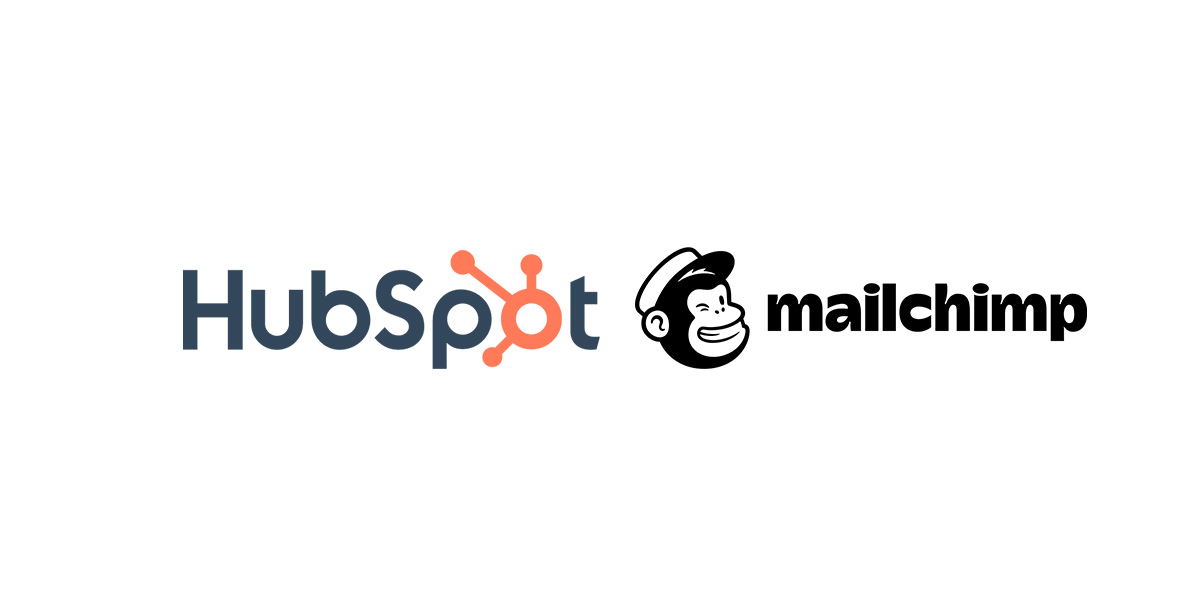“Can Mailchimp do everything we need or should we just move it all to HubSpot?”
Man, if I had a dollar for every time I’ve been asked a version of that question over my years as a marketer. It makes sense…if it ain’t broke don’t fix it right?
For a while, Mailchimp and HubSpot weren’t entirely comparable. Mailchimp began as an email marketing platform that had one of the few drag-and-drop editors out there, which made creating beautiful emails a breeze. Their bread and butter was sending large scale email campaigns and helping you evaluate and engage with subscribers.
Then they shifted into an all-in-one marketing platform with new features like landing pages, social posting and a marketing CRM. Their goal was to fully empower small businesses with all the tools they needed for digital marketing on an easy-to-use platform. This shift put them in a similar category to HubSpot, where one of the big draws was being able to centralize your marketing functions on a single platform.
Having used both of these platforms myself — and recently delved pretty deep into using Mailchimp to augment some HubSpot efforts — I have a lot of thoughts on these two platforms that I’ll share below.
But hey, if you want to spoil the surprise here’s the TL;DR:
While their features are similar, these platforms are meant for different business sizes. If you’re a small business, you likely aren’t ready to make the investment in HubSpot and honestly, you probably don’t have time for it. However, if you’re any bigger than small, HubSpot is the way to go.
Mailchimp Overview
As one of the largest names in email marketing software, almost everyone is familiar with Mailchimp. At the start of my marketing career, Mailchimp was my go-to platform for email marketing. It’s relatively easy to build things on the platform and they’re geared toward users who aren’t living and breathing marketing every day.
Main Features
- Email Marketing — You can send one-off campaigns and build full automations in the platform. This functionality is the heartbeat of Mailchimp and they do it reasonably well. They also offer custom email templates so you can quickly create new emails that already have your branding and layout.
- Marketing CRM — The CRM tool (customer relationship management) will allow you to manage your contact list and see a detailed overview of your relationship with a given customer, similar to searching your list of friends on social media. Mailchimp’s “CRM” is simplified and geared toward very basic functions.
- Analytics and Reports — Every email and marketing platform offers some level of reporting, and Mailchimp is no different. They offer an easy-to-understand overview of your metrics in a convenient dashboard.
- A/B Testing — A/B testing is an essential feature if you’re trying to make incremental improvements on your email sends. You can test variations of your email campaigns to see which ones perform better so you can continually improve the outcomes of your marketing efforts.
HubSpot Marketing Hub + CRM Overview
HubSpot emerged in 2006 in response to the changing ways in which customers interact with ads online. They made “inbound marketing” a staple in every marketer’s vocabulary and built their entire ecosystem around enabling this type of marketing.
HubSpot has email tools but the platform is so much more. Their Marketing Hub provides robust automation and segmentation capability and you can easily expand into other Hubs (Sales, Ops and Service) as your business scales. Although many small businesses use HubSpot, the platform is geared more toward businesses that are medium-sized and larger.
Main Features
- Email Marketing Tools — With HubSpot’s tracking tools, you’ll know as soon as a contact opens an email. Like Mailchimp, they also offer a drag-and-drop email editor, albeit with a bit less customizability.
- Appointment and Meeting Scheduler — HubSpot’s CRM has a meeting scheduling tool built right in. It works just like Calendly does and automatically adds the scheduled meeting to your prospect’s contact record.
- Marketing Automation — HubSpot’s workflows allow you to automate email series just like Mailchimp, along with a host of other cool things. From automating sales tasks to pushing a notification to Slack, you can clean up a lot of processes by automating them with HubSpot’s workflows.
- Easy and Flexible List Management — HubSpot offers a fairly quick and easy list tool that allows you to create new audience segments with ease.
- Reporting — HubSpot has upped its reporting game in the last year. You can mine lots of really actionable data with the tools they provide. You can create custom dashboards so it’s easy to track your KPIs and quickly create reports that allow you to delve into the actions your prospects are taking throughout their customer journey.
What Mailchimp is Good At
Mailchimp is geared toward small businesses, and they have built a tool set that does a good job of enabling that target audience. The reporting isn’t super in-depth, but it does what a busy owner or a beginner would need without getting caught up in all the details.
It also has a relatively small learning curve. The way Mailchimp structures their reporting and tools is super simplified, which is a plus for a small business who likely don’t have a full-time marketer delving into reporting every day. They make enough data available that you have something to take action on and don’t burden you with much beyond that.
Another pro is that their email builder is intuitive for users, which is great for someone who doesn’t spend all day in an email editor.
The number one reason someone would choose Mailchimp over HubSpot, however, is price. The two platforms simply cater to two different groups of businesses. If you’re a small business, the high price tag of HubSpot won’t be worth it, no matter the features it has. Mailchimp is competitively priced against other email providers and you can get a lot of tools for about $60 per month.
Where Mailchimp Falls Short
Like I said before, Mailchimp and HubSpot cater to two different audiences with very different budgets. This leaves some people wondering if they should use (or continue to use) Mailchimp just because it’s cheaper.
Given that Mailchimp and HubSpot are at two totally different price points, I want to focus on some of the hidden costs of Mailchimp, regardless of your pricing tier, and where HubSpot makes up for those.
- Speed — I don’t care how cheap your platform is, if you spend quadruple the time waiting for screens to load after every third click, you’re losing money from the time you’re spending.
Some things that take 30 minutes in Mailchimp only take 10 in HubSpot. Seriously. And the more you scale Mailchimp the bigger that gap is. How much do you get paid an hour? Does it make up for the gap between Mailchimp and HubSpot when you consider how much more time you spend doing things in Mailchimp? - Actionable Metrics — Like I said before, Mailchimp provides just enough data for you to improve small tactics. But, if you’re looking to really optimize your marketing assets, Mailchimp just doesn’t cut it.
Here’s an example: I want to pull a report of people who have clicked within an automation. Mailchimp forces you to select the exact link they clicked in a specific email (not any link in that journey). You can see your overall statistic (how many people clicked), but you have to drill down into each individual email to see which contacts clicked.
Why is that a problem? If you want to continue outreach to the contacts who were the most engaged, you can’t without a lot of manual work which is frankly beyond frustrating. - Tie into Sales — Mailchimp doesn’t claim to be a sales platform so I will not hold them to that standard. However, due to their reporting limitations it makes it very hard to use Mailchimp marketing data to enable your sales team. I’m a big believer that sales and marketing should be working really hard to close more deals together and you just can’t do that with Mailchimp as your primary marketing tool.
- Inflated Metrics — Also worth noting here is that Mailchimp doesn’t filter any bot opens from your emails, so open rates are often inflated when compared to other platforms.
HubSpot vs. Mailchimp: The Verdict
The truth is, these platforms are not geared toward the same people. If you’re a small business without a full-time marketer, maybe Mailchimp or another similarly priced platform is the right choice. I probably wouldn’t recommend HubSpot.
But if you’re looking to go hardcore on your marketing, don’t even consider Mailchimp. Please. HubSpot not only provides better, faster tools, it also sets you up to easily expand those tools as your needs grow.
Want to chat more about HubSpot? Feel free to reach out.



